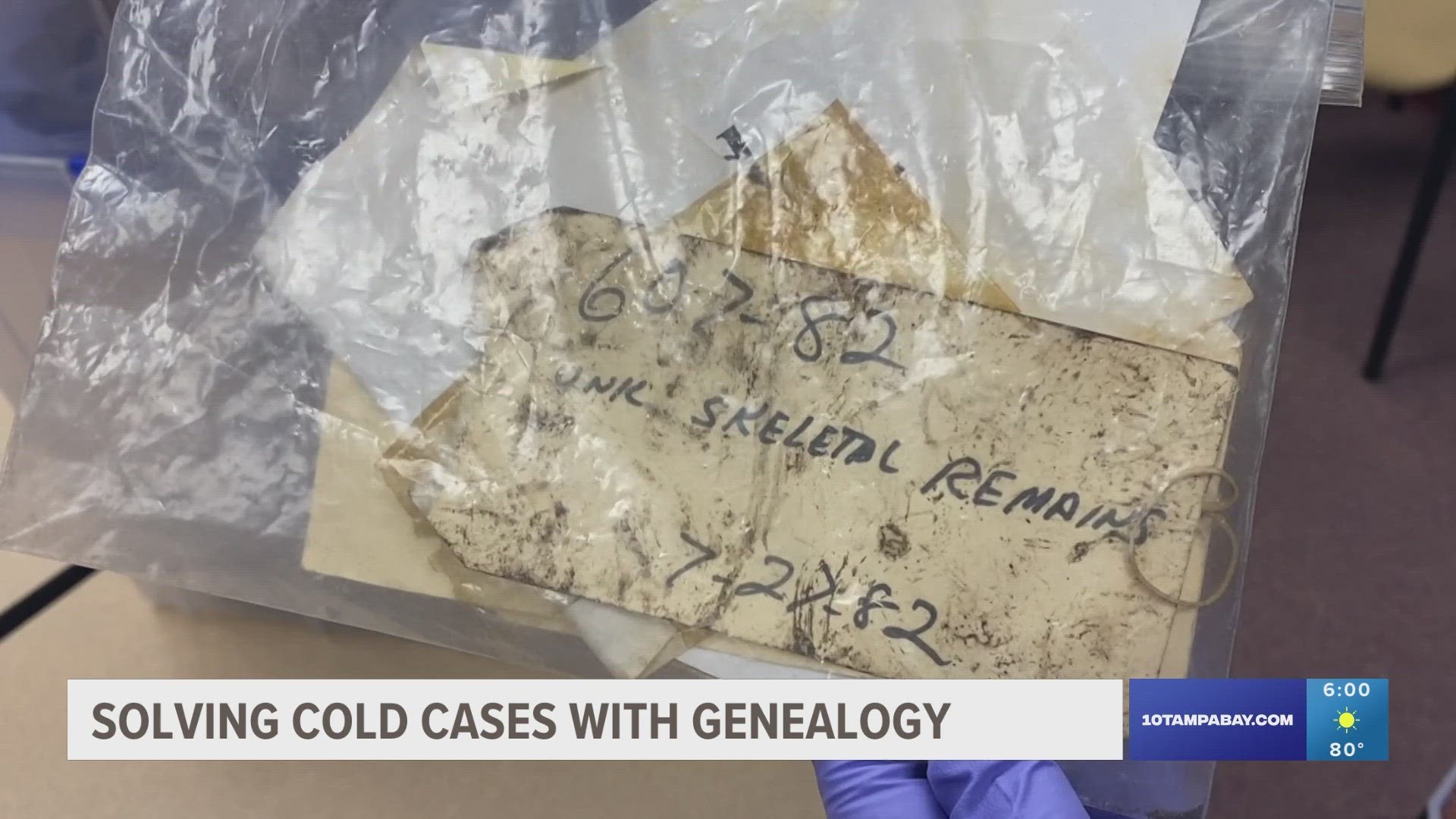HILLSBOROUGH COUNTY, Fla — Right now, in Hillsborough County, there are 50 cases of unidentified human remains. At the medical examiner's office, new technology is now helping solve decades-old cases.
When fingerprints, dental x-rays, and DNA analysis don't help in identifying an individual, it's typically a dead end.
"Unfortunately, if there's no further developments, or no updated technologies, then the [evidence and remains] may sit there," Blake Patel explained. Patel is a forensic death investigator at the medical examiner's office.
Now, with forensic genetic genealogy, instead of searching solely for direct matches, investigators are able to build family trees around distant matches, working their way backwards to find a connection.
"So it's really successful, we've already solved one case in conjunction with Hillsborough County Sheriff's Office," Patel said.
That one case brought much overdue closure to the family of Charles Allen Ray. Ray died in 1985. Thanks to genetic genealogy, his family now knows what happened to him following his decades-old disappearance.
"It's extremely fulfilling just to know that all this effort and training and resources that we've put into it is providing answers to these family members that may have had this ambiguous grief for so many years, not knowing what has happened to their loved one," Patel shared.
This work is so important, it's now Patel's full time job. Genetic genealogy is someone most of Patel's colleagues know how to use. One top of all other tasks the job entails, there was a need to dedicate on person to genealogy analytics. That's Patel.
"So if we didn't have this technology, our cases could be unidentified indefinitely," Harrison Cowan, the medical examiner manager of operations said.
There's a way you can help in these forensic cases too. When you take a 23andme or Ancestry test, it’s not available to the medical examiner's office or any forensic professional. You have to complete one more step.
For investigators like Patel to be able to use your genealogy to help identify the deceased, you have to upload your data into GED match or family tree DNA.
"You can choose to be matched up or for your kit to be used in the research for unidentified human remains, where you can choose for it to also be used to solve potential violent crime," Patel said.
And it takes just minutes to do online. We asked the medical examiner's office if you're able to remove your data from the databases after inputting it. You can opt-out at any point to delete your information from these genealogy databases.
Malique Rankin is a general assignment reporter with 10 Tampa Bay. You can email her story ideas at mrankin@10tampabay.com and follow her Facebook, Twitter, and Instagram pages.
OTHER COLD CASE STORIES:

